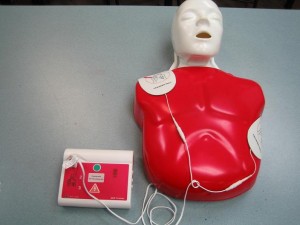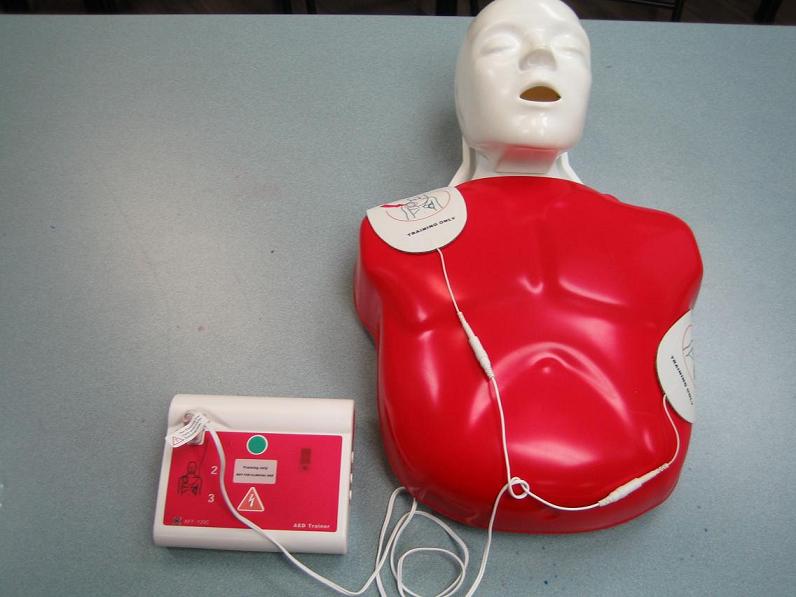https://www.youtube.com/watch?v=d9evgNUj_wU An automated external defibrillator (AED) is a lightweight, portable device that delivers an electric shock to the heart after a sudden cardiac arrest (SCA). The shock is needed to revive the heart function after SCA. A cardiac arrest is a condition wherein the heart produces irregular rhythms and then stops beating. This becomes a medical emergency, as the blood flow to the brain and internal organs will cease. If no immediate care is done for individuals having a sudden cardiac arrest, the chances of survival will decrease since the condition may result in death within minutes. Automated external defibrillators have become a life saving equipment in responding to life threatening conditions used by emergency medical responders to provide an electrical shock to revive the normal heart rhythms. The material posted on this page is for learning purposes only. To learn to effective use an AED and how to provide CPR enrol in a CPR and AED course today.
Restoring the Normal Heart Rhythms
The heart has its own electrical system that triggers the contraction of the heart muscles. It is responsible for the control of all of the events that occur in the heart while pumping out blood into the circulation. When there are problems within the heart, the blood vessels and electrolytes may cause a disruption of the electrical system and may result in arrhythmia.

Arrhythmias are problems with the conduction of electricity in the heart that causes abnormal heart rhythms. There are a number of arrhythmias, but not all of them are treated with defibrillation. The only “shockable” arrhythmias are pulseless ventricular tachycardia and ventricular fibrillation. Both of these arrhythmias may cause cardiac arrest. Ventricular tachycardia is the fast, regular beating of the ventricles. During an arrhythmia, there is a decreased blood pumped through the circulation because there is also a little amount of time for the ventricles (the chambers of the heart that fills during relaxation) to fill. Since the contraction is fast, there will be a decreased blood supply to the heart during relaxation. Ventricular fibrillation, on the other hand, is a rapid, ineffective quivering of the ventricles of the heart. During this type of arrhythmia, there is no blood pumped out of the heart and the pulse is not palpable. A decreased blood supply and increased stress to the heart may lead to a sudden cardiac arrest.
How Does An AED work?
AED has a built-in computer system that detects whether the patient needs an electrical shock. The AED checks the heart rhythm through the adhesive electrodes and once the shockable rhythms are detected by the system, a recorded voice or alarm is heard to press the shock button. The shock momentarily stuns the heart and stops all its activities. It’s like resetting the heart, giving it the chance to beat normally again. AEDs are safe to use. They may also be used by non-medical personnel that are trained to respond to emergencies. Reference: National Institutes of Health. What is Automated External Defibrilator? Retrieved on June 23, 2104 from http://www.nhlbi.nih.gov/health/health-topics/topics/aed/

